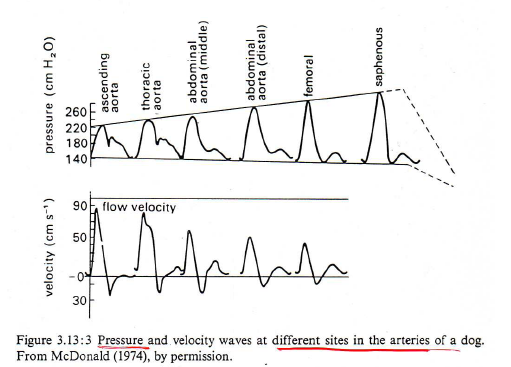Is there a negative net flow of blood in human arteries at any point of the cardiac cycle? I realise that blood flow can be turbulent, e.g. in the aorta or around stenotic arteries, but then the average is still flowing away from the heart.
The question was provoked by this graph, which admittedly I haven't seen in its context:

A similar graph showed negative velocities in the aorta and innominate artery of humans.
